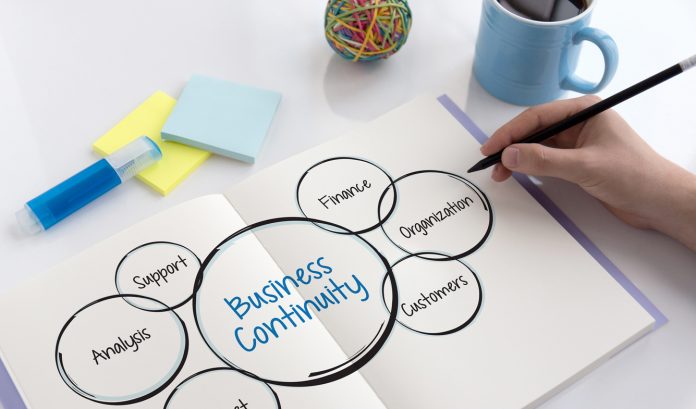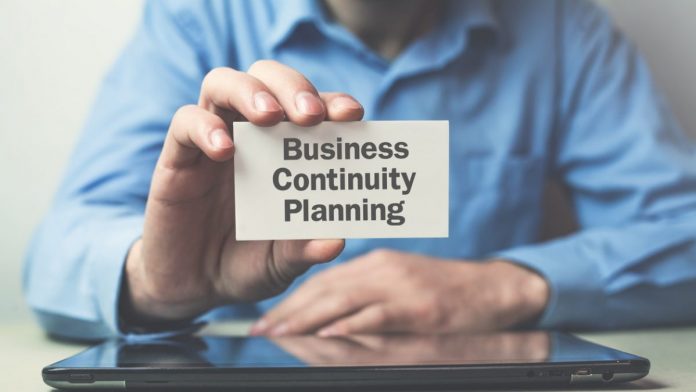Six Steps to Evolving from a BDR Provider to a Business Continuity Provider XaaSjournal.com December 3rd 2019
Too often, solution providers sell backups as disaster recovery, or worse yet, business continuity.
The William Travis Group, Inc.
The William Travis Group delivers Disaster Recovery, Business Continuity and All-Risk Incident Management methodologies and solutions.
William T. Bedsole, President
The first step to becoming a successful business continuity (BC) solution provider, you need to clear up some confusion.
Bill Bedsole, President of the William Travis Group, who has more than 30 years’ experience developing and providing business continuity solutions, says there has always been confusion over the differences between a backup, backup and disaster recovery (BDR) and BC solution. “There’s a place for backups only but they’re very different from business continuity,” he says. “Too often, solution providers sell backups as disaster recovery, or worse yet, business continuity.”
This confusion is one of the reasons that, unfortunately, it’s hard for a business to find a provider who will deliver the comprehensive BC plan and services they need. To break free from the status quo and rise to the top of your market, you need to dismiss preconceived notions and broaden your thinking. Take these six steps that will help you position yourself as a true business continuity solution provider:
1. Move beyond focusing on “recovery” to focus on “resilience.”
“It’s always better to avoid a disaster than to recover from one,” Bedsole comments. He advocates BC plans that provide viable solutions that will enable your client to respond to any event, anytime, anywhere, resiliently, to keep operations going regardless of the circumstances. The William Travis Group, for example, offers the All-Risk Incident Management Plan Development that addresses crisis communication, management succession, supply chain continuity, manufacturing continuity, labor relations, product liability, and crisis management.
2. Expand your definition of a “disaster.”
There are numerous events that can disrupt business or mission-critical operations. You may discuss fires, floods, or other natural disasters with your prospects, but an internet outage, a cyberattack, a snowstorm that makes roads to the office impassable, or senior management facing legal action can all halt activity at a business or organization. “People don’t know what to do if they have never faced them,” he comments. “The right kind of business continuity solution will address any or all of these events — and it should.”
3. Rethink the importance of “vertical-focused” solutions.
Bedsole says if your business has a vertical focus, it’s appropriate to tailor your BC solution to the market you serve. He points out, however, “Business continuity regulations and standards for different industries appear to be unique, and requirements have different names, but if you really look at them, they’re substantially the same.”
Bedsole says with a solid, core solution, you can adapt the plan or partner with an expert in your client’s vertical to ensure complete compliance.
4. Nothing will work without starting with a thorough assessment.
It’s illogical to assume that you can provide a client with a business continuity plan without understanding their unique operations and challenges. However, Bedsole says, “The assessment is overlooked about 99 percent of the time.”
“You need an assessment to understand their needs — their real needs may not be what they tell you. You need to devise an impartial way to assess their operations and their risks, and then work to understand your findings from your customer’s perspective,” he says.
5. A “garbage bin” approach or a checklist doesn’t constitute a viable business continuity plan.
Bedsole warns MSPs and VARs not to “fall for a worthless plan.” He refers to one type of plan with little value as a “garbage bin” plan that includes everything the author has ever seen or heard, dumped into hundreds of pages of text. Bedsole says the problem with this plan is that “users can’t figure out where to go when the sky is falling.”
Another type of plan with limited value, which is common in the industry, is the checklist. These plans have a business distribute responsibility during a disaster, providing users with line items to accomplish. But a line item on a checklist rarely conveys all of the information the user needs — which could be an entire chapter in a plan — and there is often no coordination among the people using the checklists.
A smarter strategy is offering an end-to-end solution that includes insights from experts who know the issues and helps to build the plan based on experience, rather than something a plan author read in publications. MSPs and VARs can build expertise by hiring in-house talent or partnering with providers who specialize in BC.
6. The real BC challenges have never been with technology.
Business continuity solutions are not only about backing up data or providing a purely tech solution that recovers data after disaster strikes. “The problem has never primarily been with tech recovery. They’ve been related to everything else,” Bedsole comments. “Business continuity is more involved and dependent on a myriad of issues than DR will ever be.” You should view backup and disaster recovery solutions as tools that are used as a part of an all-encompassing BC plan.
A Business Continuity Plan Isn’t the Last Deliverable
Another shift in perspective that MSPs and VARs may need is to view business continuity plan development as more than a one-time project.
“The most important aspect of providing business continuity solutions is lifecycle maintenance,” Bedsole says. “Any company can gear up once to face a disruption, but to stay continually prepared is the real challenge. Your clients’ plans will need small rebuilds over and over again. You need to address changes as soon as possible when they occur. A year of out date for a plan is a problem,” he comments.
MSPs or VARs who take the lead on keeping business continuity plans up to date provide their clients with the greatest ability to respond to events that could disrupt operations. “It’s easy for clients to lose focus and drive when it comes to maintaining a BC plan,” Bedsole says.
Moreover, he says that managing business continuity plans for multiple clients will ultimately benefit them all. “Every time we do a test, we learn something that we want to use to update our plans. We leverage all of the learning from tests so that all of our clients get the advantage from it.”
XaaS Journal
Six Steps to Evolving from a BDR Provider to a Business Continuity Provider
December 3rd 2019
By Jay McCall
A business continuity strategy includes identifying critical operations, putting solutions in place to maintain those operations in the event of a natural disaster or outage, and monitoring and maintaining those solutions. Organizations can opt to outsource this planning and solutions monitoring to a Business Continuity as a Service (BCaaS) provider.
Why It Matters To Your Customers
When business disruption occurs due to a natural disaster, utility outage, or other cause, it creates a wide range of problems that can lead to significant financial losses. Obviously, when operations stop, so do production and sales, but an outage can also mean added costs of getting equipment back on line, paying overtime to get back on schedule, recovering lost data, and customer make-goods.
Natural disasters can’t be prevented and often strike with little warning, but they aren’t the only reasons operations can come to a halt. Network or utility outage, cyberattack, hardware failures, and human error can result in business disruptions that can be just as damaging to a business’s bottom line.
Why Business Continuity Is An Opportunity
Few would dispute the importance of business continuity, but business may not have the in-house resources to manage it. You may encounter clients who instead have adopted a “head in the sand” position, deciding that the odds are against disaster striking. By offering a managed, budget-friendly Business Continuity as a Service solution, you can provide these businesses with a way to ensure operations can continue without putting a burden on in-house resources.
Design total solutions that begin by identifying critical operations and performing a risk analysis. Then, identify solutions that can ensure production and processes can continue and monitor operations and business continuity solutions to ensure everything remains operational. BCaaS is more than just backup and disaster recovery (BDR), although that is a vital part of a business continuity plan. The plan may also include cellular failover routers that enable communications and internet access when the network is unavailable and uninterruptible power supplies that provide emergency power when there is an outage. To provide your client with the best solution, you need a thorough understanding on the inner workings of their operations—which may reveal additional opportunities for solutions or services you can provide.







